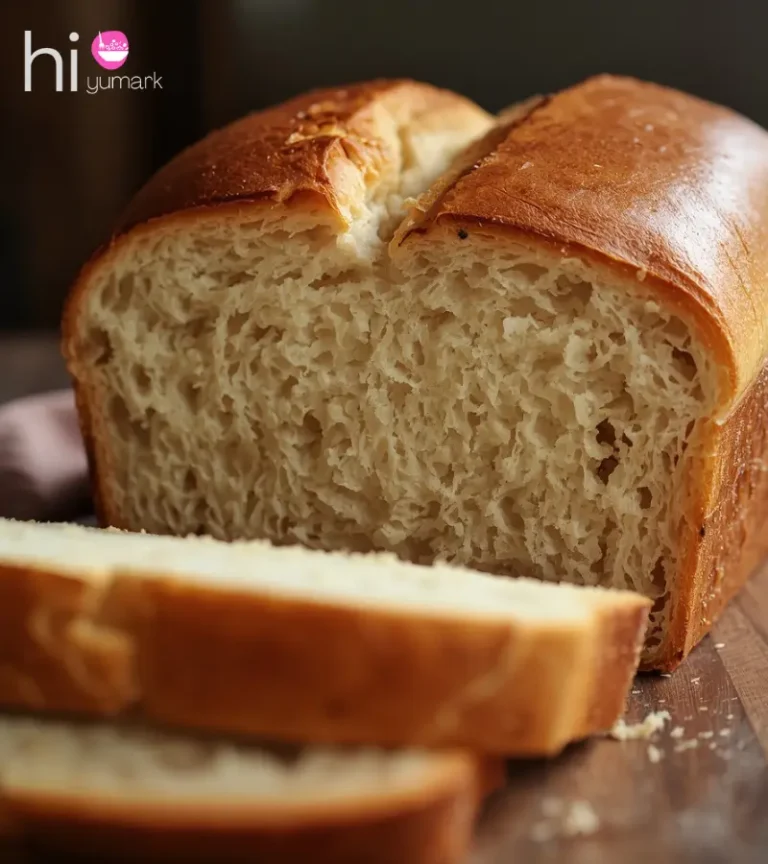Why Is Amish Apple Butter Smoother Than Regular Butter?
Try Authentic Amish Apple Butter at Home!
Before we dive into why Amish apple butter is so silky, you can actually taste it yourself. Authentic jars are available online – no need to wait hours of cooking.
- Mrs. Miller’s Amish Homemade Apple Butter – 9oz Jar. Check Price on Amazon
- Amish Wedding Foods Apple Butter – Traditional Recipe. View on Amazon
If you’ve ever tasted Amish apple butter, you know it’s not just smooth – it’s luxuriously silky in a way most store-bought versions can’t match. The short answer? Amish apple butter is cooked low and slow, with the right apples, careful peeling, and a final purée that eliminates every trace of graininess. The result is a fruit spread that glides across toast like velvet.
Unlike regular dairy butter, apple butter has no cream at all. Its “butter” name comes from its spreadable texture, not its ingredients. That’s why the real comparison is between Amish apple butter and mass-produced apple butter – not dairy butter.
In this article, you’ll see exactly why Amish apple butter feels smoother, how traditional methods make the difference, and what you can do to get the same results at home.
What Is Amish Butter vs. Amish Apple Butter?
Before we go deeper, let’s clear up a common confusion.
Amish butter:
- Dairy product made from cream
- Higher butterfat content (84–85%) vs. 80% in most store butter
- Slow-churned for a creamier mouthfeel
Amish apple butter:
- Fruit spread made from apples, spices, and sugar
- No dairy – just long cooking and pureeing
- Smoothness comes from breaking down apple fibers until they dissolve into a paste
They share the word “butter” because both spread easily, but the science behind their textures is totally different.
What Is Apple Butter and Why the Name?
Apple butter is essentially applesauce taken to the extreme. Apples are cooked down for hours until almost all water evaporates. The sugars caramelize, the flesh breaks apart, and what’s left is a dark, concentrated spread.
The “butter” in its name has nothing to do with cream. Historically, people used “butter” to describe any soft, spreadable food – like peanut butter or almond butter.
Why Is Amish Apple Butter Smoother?
The answer comes down to technique, ingredients, and patience.
- Slow cooking: Amish recipes often simmer the apples for 8–12 hours. This breaks down all plant fibers.
- Apple choice: Soft-fleshed varieties like McIntosh or Golden Delicious cook into a smoother base than crisp apples like Granny Smith.
- Peeling: Removing skins before cooking avoids tough bits.
- Final blending: After cooking, many Amish recipes pass the butter through a food mill or blend it with an immersion blender until every trace of pulp is gone.
These steps remove grit and create a velvety texture that industrial processing can’t quite replicate.
How Ingredients Influence Texture?
Some apples break down better than others. Here’s a quick guide:
| Apple Variety | Smoothness Level | Flavor Profile |
| McIntosh | Very smooth | Mild, slightly tangy |
| Golden Delicious | Very smooth | Sweet, mellow |
| Fuji | Smooth | Sweet, crisp |
| Granny Smith | Less smooth | Tart, firm |
Apple Varieties and Fiber Content
The apples you choose affect smoothness as much as the cooking method. Fiber, pectin, and moisture all play a role in how the final butter feels.
Amish approach
Amish cooks mix different apples for body, sweetness, and tartness. Soft-fleshed varieties like McIntosh, Cortland, or Golden Delicious collapse quickly into a creamy base. Small amounts of crabapples are sometimes added for natural pectin, which helps thicken the spread.
Commercial approach
Factories often use apples chosen for cost, not texture. Firm and inexpensive types such as Granny Smith or Rome resist breaking down, leaving behind fibers that feel gritty unless heavily processed.
Seasonal effect
Freshly picked apples soften more easily and yield smoother butter. Stored apples may be sweeter but have tougher cell walls, which reduce creaminess. The Amish choice of fresh, mixed apples avoids this problem.
👉 Takeaway: Smoothness depends on the apple as much as the method. Amish cooks pick varieties that naturally break down into a velvety spread, while large-scale production often relies on cheaper options.
Extra tips:
- Adding crabapples boosts pectin, which naturally thickens the butter.
- Too much sugar early in cooking can cause sticking, which may lead to caramel lumps.
Sugar Balance and Its Effects
Sugar does more than sweeten apple butter — it affects texture, color, and even smoothness.
In Amish kitchens:
- Sugar is often added toward the middle or end of cooking. This allows the apples to break down naturally first, without risk of scorching.
- Too much sugar early on can crystallize or caramelize at the bottom of the pot, creating tiny lumps that ruin the silky texture.
- Many Amish recipes keep sugar levels moderate, letting apple varieties (like McIntosh or Golden Delicious) provide most of the sweetness.
In commercial production:
- Sugar, corn syrup, or even high-fructose corn syrup is added at the beginning to guarantee consistency across huge batches.
- This saves time but can lead to a stickier, less nuanced texture.
- Some brands use artificial sweeteners to cut calories, which changes mouthfeel entirely.
Flavor balance matters, too:
- Too much sugar masks the natural tang and depth of the apples.
- Too little sugar can leave the butter thin, less spreadable, and more tart than creamy.
Takeaway: Getting the sweetness right is about timing and restraint. Amish apple butter is smoother because sugar isn’t the star – apples are.
What You’ll Need to Make It at Home?
If you’re inspired to try Amish apple butter in your own kitchen, these tools make the process much easier:
- Crock-Pot 7-Quart Slow Cooker – Great for long simmering. Check Price on Amazon
- Crock-Pot Programmable Cook – Speeds up prep time. View on Amazon
- Ball Mason Jars with Lids – For canning and storage. Check Price on Amazon
The Cooking Method Matters
Amish apple butter is usually cooked in copper kettles over low heat or in slow cookers. Gentle heat prevents scorching and keeps the butter uniform.
Constant stirring ensures even breakdown, while modern immersion blenders or food mills can smooth out small lumps.
Cooking Vessel and Stirring Method
Large copper kettles spread heat evenly, while stainless or enamel pots work but may not be as steady. Cooking covered holds in moisture, while uncovered cooking thickens the spread.
Stirring is critical. In Amish kitchens, someone is always at the pot to prevent sticking and help the fruit dissolve evenly. While modern tools can fix lumps later, steady stirring during cooking still makes the biggest difference.
👉 Takeaway: Even heat and steady stirring create consistency. That’s why traditional vessels and attention produce a smoother butter.
Puréeing and Sieving Methods
Even after hours of slow cooking, apple butter often needs one last step to achieve a silky texture.
Amish cooks commonly pass it through a food mill, which removes skins, seeds, and any small fibers that survived the long simmer. This extra step creates a spread that feels uniform on the tongue.
Modern home kitchens often rely on immersion blenders or countertop blenders. These tools quickly break down any remaining pulp, though the texture can still be slightly coarser than when strained through a fine sieve.
Some Amish cooks will even blend and then sieve the butter to remove every trace of grit.
Takeaway: Long cooking breaks apples down, but puréeing or sieving finishes the job. The more thorough the final step, the closer the butter comes to that velvety Amish standard.
Home Cook Tips From Real People?
On Reddit and other forums, home cooks share what works:
- Peel the apples before cooking – skins give a gritty feel.
- Use crabapples with regular apples for a silkier spread.
- Don’t rush. Let it go until the spoon leaves a clean trail in the pot.
These match what Amish kitchens have done for generations.
pH, Acidity, and Preservation
Another factor behind Amish apple butter’s smoothness and safety is acidity. Apples are naturally acidic, usually between pH 3.3 and 3.9. This environment helps prevent microbial growth as the butter cooks down.
For canning, experts recommend a pH of 4.6 or lower to block Clostridium botulinum. Amish cooks do not measure pH but rely on tart apples and long cooking to stay safe.
Commercial brands, by contrast, add preservatives like citric or sorbic acid to ensure shelf stability, which can slightly change flavor.
Takeaway: Natural acidity acts as both flavor and safeguard. Amish methods achieve safety without chemical stabilizers.
Shelf Life: Homemade vs. Commercial
One of the subtle but important differences between Amish apple butter and store-bought jars is how long they last and why.
Homemade Amish apple butter
When refrigerated after opening, Amish apple butter usually lasts about two to three weeks. This is enough for small batches meant to be eaten fresh.
If frozen in airtight containers, it can keep for up to six months without much change in quality. Properly canned jars, stored in a cool and dark place, can last twelve to eighteen months unopened.
Commercial apple butter
Store-bought jars are often designed for a longer unopened shelf life, sometimes up to two or three years. This is achieved with stabilizers such as citric acid or sorbic acid and high-temperature canning.
Once opened, commercial apple butter behaves much like homemade, lasting about two to three weeks in the fridge. The difference lies mainly in storage before opening, not after.
Takeaway: Amish apple butter wins on freshness and flavor, while store-bought wins on stability. For the best of both worlds, proper canning at home makes a big difference.
Production Scale Differences (Amish vs. Industrial Methods)
The contrast between Amish apple butter and commercial brands is not only about ingredients but also about how each is made. The scale of production shapes the final texture in noticeable ways.
Amish production
Amish kitchens work in small batches, often only a few gallons at a time. The process is slow and careful, allowing the apples to cook evenly without rushing.
Stirring is usually done by hand to prevent scorching and to help every bit of fruit break down. The butter may simmer for eight to twelve hours, with no shortcuts and almost no additives.
Industrial production
Factories operate with massive steam kettles that can hold hundreds of gallons at once. Cooking times are kept short, sometimes only two to three hours, to keep up with demand.
To replace the effect of long cooking, stabilizers such as starch or corn syrup are added. Some pulp often remains, leaving the final product less smooth compared to the Amish version.
Takeaway: Amish apple butter values patience and texture, while industrial apple butter prioritizes speed and volume. That difference explains why Amish jars feel velvety compared to store brands.
Amish Apple Butter vs. Store-Bought
Why doesn’t store-bought match the smoothness?
- Shorter cooking times to save cost
- Different apple varieties chosen for price, not texture
- Less final processing – some pulp remains
- More stabilizers instead of relying on long reduction
Amish apple butter wins because it’s made for flavor and feel, not mass production speed.
Conclusion
Amish apple butter is smoother than regular butter – not because it has more fat, but because it’s made with time-honored methods that break apples down to their silkiest form. Slow cooking, the right apple choice, peeling, and thorough puréeing make all the difference.
If you want to match that texture at home, follow the Amish playbook: pick soft-fleshed apples, cook low and slow, and don’t skip the final blend. You’ll get a spread that rivals any jar from a country market.
When you taste it on warm bread, you’ll see why people keep coming back for it – and why we’ll keep sharing these kinds of timeless food secrets here.
Read related Amish recipe queries






